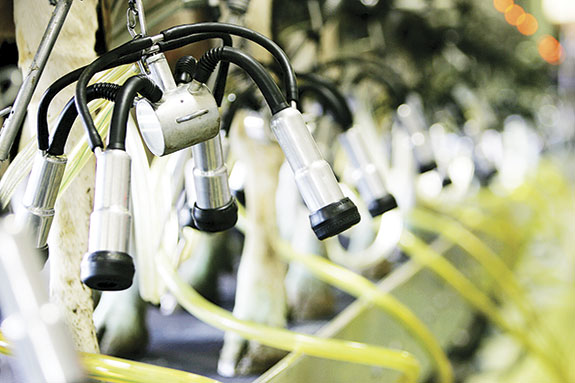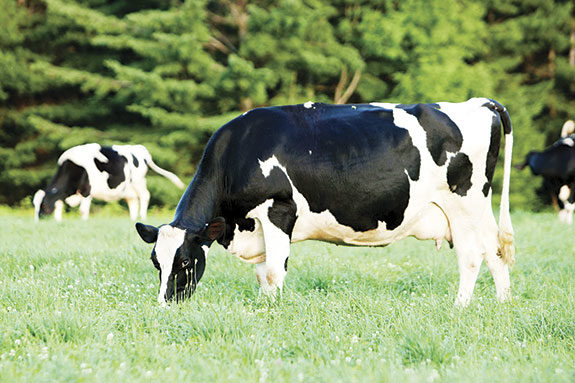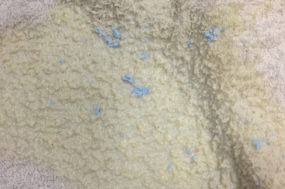The organic milk market is competitive, and consumer demand continues to grow: The organic category continues to be one of the fastest-growing segments of the food industry, averaging double-digit growth year over year, and is now a $31.4 billion segment.
The second-largest organic category is dairy, which represents 14.6 percent of total organic food sales. Since the founding of our brand more than 20 years ago, the main way Horizon Organic has chosen to compete is based on quality.
Quality is a hallmark of the company, as high-quality milk means high-quality products that taste great and have a superior shelf life.
In order to achieve desired quality, the company has been willing to pay farmers the organic industry’s highest premium for top-tier quality milk performance among national milk brands.
Our quality bonus is based on monthly raw milk testing averages for three key measures: somatic cell count (SCC), standard plate count (SPC) and preliminary incubation (PI). The quality premium starts with an SCC of 300,000, an SPC of 16,000 and a PI of 32,000.
As bacteria counts decrease to a SCC at or below 140,000 per ml, SPC at or below 4,000 and PI at or below 8,000, the quality bonus increases to a maximum of $3 per hundredweight in addition to the base price.
The company has turned its love of quality into a competition. Each year, the 600-plus farmers that supply milk to us fiercely compete for the company’s National Quality Award.
The company recognizes the top 10 percent of farmers in each state whose milk is the highest quality within the network, the top 10 quality milk producers nationwide and the top producer in the nation.
In order to be in the running for the National Quality Award, producers must ship organic milk to the company for one full year and be in good standing on all regulatory requirements.
The National Quality Award has been awarded to organic farmers on both coasts, from ruggedly beautiful Maine to sunny California. Farmers who have received our National Quality Award range from a farmer hand-milking a dozen cows to a farmer milking several hundred.
What these farmers have in common is an attention to detail and a passion for creating high-quality milk. Recipients are celebrated with a trip to the Farm Aid concert and a highly coveted plaque.
Two farmers who have won the company’s National Quality Award share their tips on how they achieve the highest milk quality before the milk is shipped.
Stephen Galens of Clifton Springs, New York, received the award in 2012. Galens pays strict attention to cow comfort and the best nutrition possible in order to keep bacteria counts low.
“We focus on keeping the cows comfortable and well-fed. When the cows are in the barn, there’s always baleage and ground-ear corn there for them, and sometimes a little triticale.”
Galens also focuses on his equipment for SPC and PI counts. “On a nearly daily basis, I keep track of the wash temperature, do pH strips to check the pH of acid rinses and use chlorine strips to make sure the sanitizing solution is where it’s supposed to be,” he says of his pipeline milking system.
To ensure he’s on track, he checks his numbers against a wash survey worksheet.

Galens says, “I had an inspector give me a tip once that the most ideal wash temperature is 135ºF, which means you have to start out at over 160ºF so that at the end of an eight-minute cycle, the temperature is still over 120ºF.
The most important number is that final temperature: If it drops below 120ºF, you could get yourself in trouble,” he says.
Jeff and Sharon Sheen milk their herd of 45 Holsteins in Gouverneur, New York, and received the award in 2011.
Sheen uses the California Mastitis Test to identify infected quarters.
If he does have an infected cow, he will isolate and three-quarter-milk the animal. The high-cell-count quarter does not go into the tank. If the mastitis does not improve, he dries off the cow.
The Sheens also use Quality Milk Systems to test their herd on an annual basis. In addition to cleaning and sanitizing the milking equipment, the Sheens add a non-foaming acid cleaner to their soap mix on a weekly basis.* They also use sand as bedding.
“In most barns, you can’t use sand because it’s hard to keep clean, but we have a freestall barn which makes it easy to brush out,” Sheen says.
Producing quality milk in an organic dairy system is not much different than producing quality milk in a conventional dairy system. Organic dairying means the farmer cannot use antibiotics, growth or reproductive hormones or genetically modified organisms.
In addition, animals are fed 100 percent organic feed, and farming is pasture-based with year-round access to the outdoors. To produce quality milk, an organic farmer must focus on the basic principles of farming:
• Utilize clean bedding with excellent sanitation.
• Prep the udder well, only milking clean, dry teats.
• Provide high-quality feed to build and support strong immune systems.
• Establish a consistent routine (simple but extremely important).
• Monitor your milking system’s cleaning cycle with a focus on adequate hot water.
• Ensure your cooling system is functioning properly and have it evaluated by a professional at least twice a year.
• Change rubber hoses, inflations and gaskets according to manufacturer’s recommendation because worn parts retain bacteria.
• Clean vacuum systems regularly.
Mastitis is a common problem on both conventional and organic dairy farms. According to Dr. Linda Tikofsky, formerly of Cornell University’s Quality Milk Production services, “Cows with mastitis have reduced production during their lactation.
For every doubling of a cow’s SCC, she will produce 400 fewer pounds of milk that lactation.” This, in addition to potential quality bonuses, is a great reason to take measures to produce high-quality milk.
We are very proud of our farmer partners and their dedication to producing high-quality organic milk. Vigilant attention to the details of farm management helps produce the highest-quality organic dairy products. PD
*As a note of caution, never mix acid rinse chemicals with a chlorinated cleaning solution; this combination produces hydrochloric acid, a deadly gas.
Jo Ann Greenburg is the senior manager of quality assurance compliance of Horizon Organic.
PHOTOS
TOP RIGHT: Organic farming is pasture-based with year-round access to the outdoors. High-quality feed builds and supports strong immune systems.
MIDDLE RIGHT: To produce quality milk, an organic farmer must focus on the basic principles of farming, including prepping the udder well, only milking clean, dry teats and monitoring the milking system’s cleaning cycle with a focus on adequate hot water. Photos by Keri Pickett Photography, courtesy of Horizon Organic .







